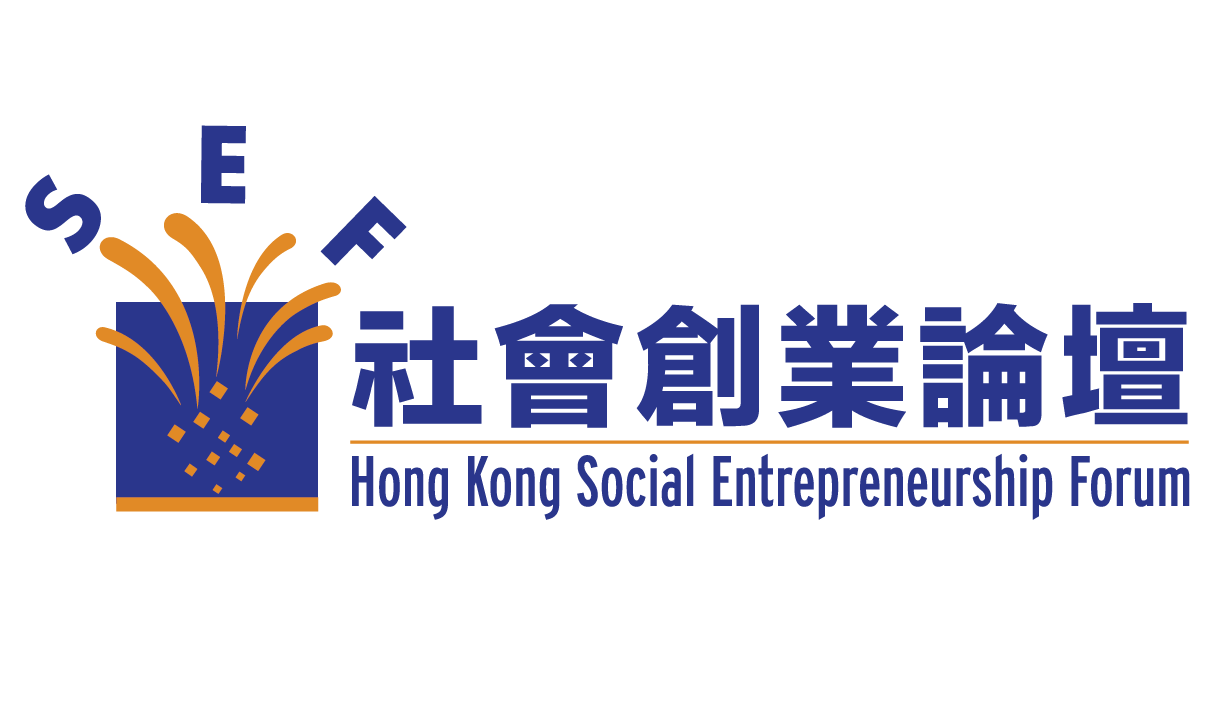Why I Am Interested in Social Entrepreneurship: A Civic Movement Not Only for the Young and the Restless – “SE to the Power of 2”?
By Denis Chang, SC
(The Article was originally published on Social Entrepreneurs Newsletter Issue 102, on 31 May 2011)
I’m what you might call a “past half-time” newcomer to social entrepreneurship as a civic movement. The term “past half-time”, may I explain, refers not to the age of the movement, which is still relatively young in its modern incarnation, but to one’s own physical age or stage of life!
Luckily, my wife tells me that I’m still young at heart, thank God. You can’t teach an old horse new tricks they say – but not if the old horse is a lawyer, at least not as far as I am concerned. . My learning curve has been a steep one, notwithstanding my previous or continuing involvement in nonprofit social service organizations and other “enterprises”.
I happen to believe that the day you stop learning anything new you are probably already dead. By that test Dr KK Tse is very much alive. He is never tired of telling us that there is always something new to learn about social entrepreneurship, inspiring us with true stories of how ordinary people become change agents for social good by thinking big but often starting small.
You must have heard that message before. But embedded in it is another and important insight which is sometimes not heard. It is the difference between social enterprise and social entrepreneurship. The paradox is this: Social enterprises are not new in Hong Kong but social entrepreneurship as a civic movement is. It is a paradox because one would have thought that social enterprise was the product of social entrepreneurship,
indeed that social entrepreneurship should be at the very heart of social enterprise. If it is not, then why not? Where lies the problem? And how is the paradox to be unraveled and the problem solved?
These are not academic questions. The very future of the movement very much depends on what answers people give – indeed on how the “state, market and civil society” respond – to these and other related questions that touch on the development of social entrepreneurship, and on the so-called double bottom line. The challenges and opportunities posed, and the core values engaged, happen also to be at the heart of what attracts me to the movement and go towards answering the question why I, or indeed anybody else, should be interested at all.
Some salient points
To kick off the discussion I have six broad points to make here, in the hope that perhaps we can take the discussion further in subsequent issues of the Newsletter or in focus groups. The problem is multidimensional. It has its roots in history, ideology, psychology, politics, economics etc. There are also legal dimensions but those are probably the easiest to resolve.
1st Broad Point: As a matter of historical fact, social enterprises in Hong Kong go back to at least 1946 when the first sheltered workshop was established for disabled persons in the government’s North Point Relief Camp. The late 1950’s saw workshops set up for the blind, and a decade later for the mentally ill. By 1988, sheltered workshops were catering to almost 60% of the estimated disabled population of working age (Marianne Savage, 1988, and other papers cited in unpublished materials supplied to me by Leo Goodstadt). It is acknowledged that “in Hong Kong, work integration social enterprise (WISE) is the dominant form of social enterprise which aims at creating employment opportunities for people who are being marginalized and excluded from the labor market “(Amy Ho Po-ying, 2010) but it has also been suggested that the sustainability of WISEs is becoming increasingly difficult after the financial tsunami in 2008”, ibid.). The role of NGO’s is critical in government-supported or other enterprises.
2nd Broad Point: Following the establishment by Government of a Commission on Poverty in 2005, the Government gave support to the idea of developing social enterprises along more entrepreneurial lines, having been advised that with the help of businessmen and entrepreneurs, NGOs should be able to run a business without marginalizing their social goals. Having worked with NGOs myself over the years, I must say I can well understand why they, or at least many of them, give the impression of feeling “trapped between social mission and economic goals” (Tang , Fung, Au, Lee and Ko, April 2008). NGO of course does not mean and should not mean No Go. On the contrary I know from my own experience of quite a few social workers who do think outside the box, difficult though that is, everything considered. Dr Tse will tell you whether, in his experience, this is the exception rather than the rule.
3rd Broad Point: Social entrepreneurship is a positive mindset, a moving spirit that has certain attributes shared by successful social entrepreneurs, including the willingness and ability to see and respond to real social needs, to move away from overly-dependence on charity and grant, to adopt business strategies and take risks, to recognize and pursue opportunities, to change whenever changes are needed, to adopt innovative ways, to learn from mistakes and to rebound from set-backs. In short, it is necessary but not enough to be simply driven by social mission. There is the vision, and the “can-do” action-oriented spirit that is “for ever panting, and for ever young” (to adopt a line, written in an entirely different context, from John Keats in his “Ode to the Grecian
Urn”).
4th Broad Point: I find myself very much at home with the core values that drive the movement, values which are people-oriented, never using people as mere tools for profits but using profits for people. So it is that we explore new, imaginative and exciting ways of transforming the social ecosystem, putting at the forefront human well-being and the good of families and communities whilst paying proper regard to the so-called double bottom line of “social impact and financial sustainability” or , more broadly, “mission and sustainability”. Compare this with the so-called triple bottom line of “people, profits and planet” that many corporations practising Corporate Social Responsibility (CRS) and other socially responsible businesses love to speak of.
5th Broad Point: I have also no difficulty in seeing social enterprises as existing within a broad social-business hybrid spectrum that includes a wide range of charities and businesses with social mission, nonprofits as well as for-profits. Within the spectrum is to be found hybrid social enterprises that aim at social impact with programs that pay their own way and give some financial return to investors: see Kim Alter’s typology (Virtue Ventures).
6th Broad Point: Without in any way excusing the Government for failing to bring into the social security/safety net those people who ought never to have been or be left outside (and with due regard to the principle of subsidiarity), the spirit of entrepreneurship, stewardship and socially responsible investment should be fostered so as to equip the various sectors and civil society as a whole to help alleviate poverty in all its forms and address other pressing social needs. The widening gap between rich and poor is not just a reality confined to Hong Kong; it gives the lie to the idea that wealth creation automatically benefits everybody generally or equally in the community, that “a rising tide lifts all boats”; among other things this ignores, for example, those who have no boats and do not know how to swim.
SE to the Power of 2
I would respectfully submit that Hong Kong’s social enterprise AND the entrepreneurial spirit which animates or should animate it can be scaled up in a sustainable way. We should perhaps begin to think and speak in terms of what I would call SE to the power of 2, with the E standing for both “enterprise and entrepreneur”, and the 2 also serving as a reminder of mission and sustainability.
We should be bold enough to think of developing Hong Kong into a regional SE hub that is part of a new global compact and not be afraid to think in terms of building a social stock exchange and a social stock index (compare and contrast such an index with the KLD 400 Social Index referred to below).
We should encourage Venture Philanthropy, Impact Investment as well as Micro-Credit and enterprises that promote fair trade and ethical consumption, explore the feasibility of Social Impact Bonds, Community Interest Companies (which allow for a 35% dividend-capping as in the English model), and Employee-Owned Enterprises operated on mutualist and human relational principles – thus addressing a whole range of human needs in health, employment, education, art and recreation as well as environmental concerns, and also helping among other things to alleviate poverty (including “relational poverty”: see “The R Factor” by Michael Schluter and David Lee, Hodder & Sloughton). In all this we will be striving to help create a truly harmonious society that respects human freedom rights and dignity as well as the good of family and community.
There is every reason to believe that just as corporate social responsibility (CSR) is not incompatible with profitability, socially responsible investment (SRI) and financial returns are not mutually exclusive. The KLD 400 Social Index, for example, which is the world’s first benchmark index constructed using Environmental, Social and Governance (ESG) factors, has outperformed the S&P500 since 1990. Incidentally, by 1998 when I was invited to chair the Judges’ Panel in what was then called “The Hong Kong Awards for Industry” (in the singular), benchmarking by reference to ESG factors had already been featuring prominently if not decisively in the criteria for excellence and social responsibility.
However, as a legal practitioner who also happened to be on the Securities & Futures Commission (SFC) during its formative years, I am only too aware of all too many instances when only lip service is paid to the benchmarks set. The social enterprises in the civic movement that I am interested in will need to be role-models of social responsibility committed to the building of a whole range of social capital, including human relational capital. Charitable and nonprofit organizations will continue to play crucial roles. Profit is still to be placed at the service of people. In the ultimate analysis people are the only bottom line.
About the Author:
Denis Chang, CBE, QC, SC, JP, Hon. LLD, Senior Counsel in private practice, former Chairman of HK Bar Association and former Unofficial Member of the Executive Council of Hong Kong (Exco), Council Member of Caritas HK, Member of Board of Governors of Caritas Medical Centre, Chairman of HK Law Journal and an Adviser to the Hong Kong Social Enterprises Summit 2011.

